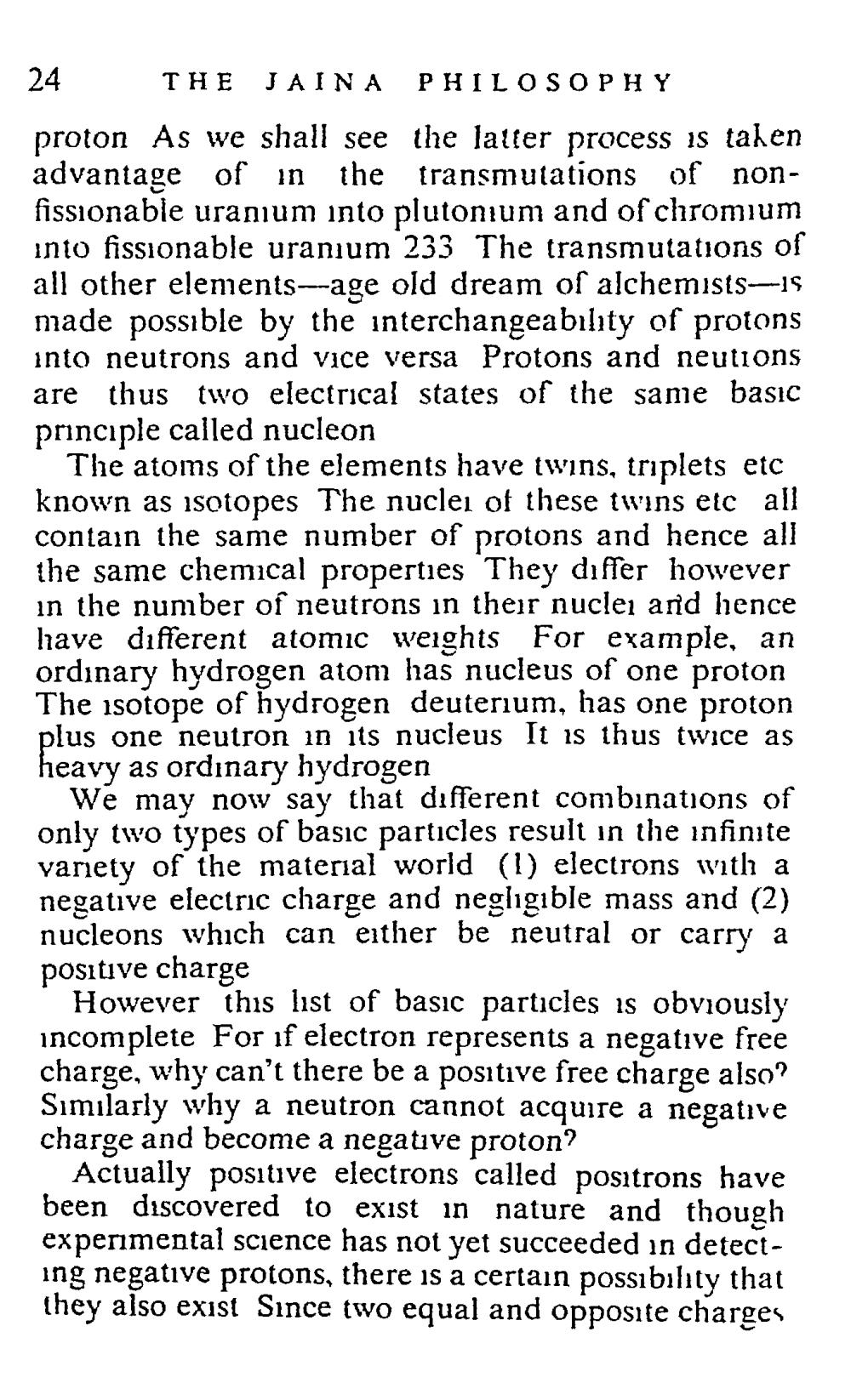________________
24
THE JAINA PHILOSOPHY
proton As we shall see the latter process is taken advantage of in the transmutations of nonfissionable uranium into plutonium and of chromium into fissionable uranium 233 The transmutations of all other elements--age old dream of alchemists--15 made possible by the interchangeability of protons into neutrons and vice versa Protons and neutions are thus two electrical states of the same basic principle called nucleon
The atoins of the elements have twins, triplets etc known as isotopes The nuclei of these twins etc all contain the same number of protons and hence all the same chemical properties They differ however in the number of neutrons in their nuclei and hence have different atomic weights For example, an ordinary hydrogen aton has nucleus of one proton The isotope of hydrogen deuterium, has one proton plus one neutron in its nucleus It is thus twice as heavy as ordinary hydrogen
We may now say that different combinations of only two types of basic particles result in the infinite variety of the material world (1) electrons with a negative electric charge and negligible mass and (2) nucleons which can either be neutral or carry a positive charge
However this list of basic particles is obviously incomplete For if electron represents a negative free charge, why can't there be a positive free charge also? Similarly why a neutron cannot acquire a negative charge and become a negative proton?
Actually positive electrons called positrons have been discovered to exist in nature and though experimental science has not yet succeeded in detecting negative protons, there is a certain possibility that they also exist Since two equal and opposite charges




